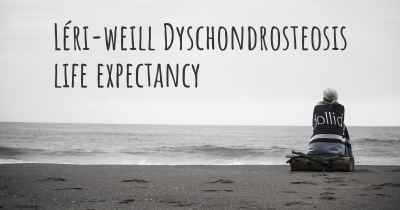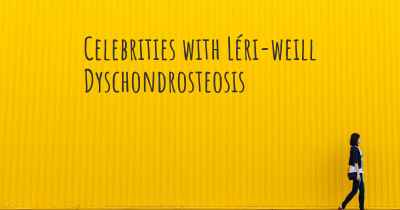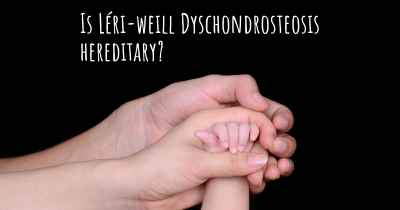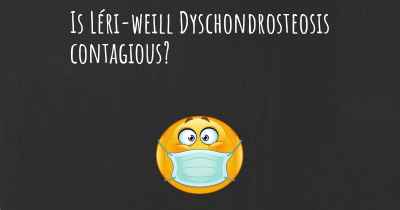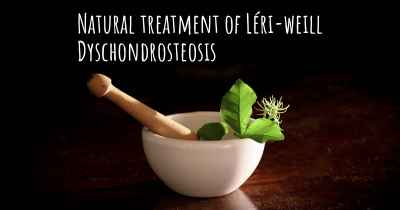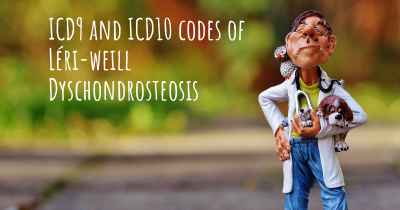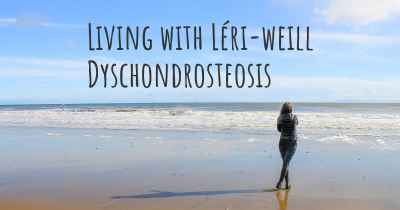What are the latest advances in Léri-weill Dyschondrosteosis?
Here you can see the latest advances and discoveries made regarding Léri-weill Dyschondrosteosis.
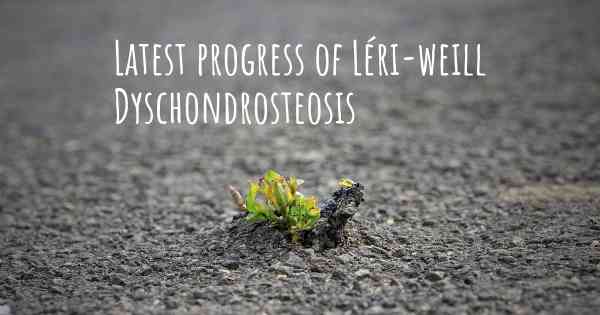
Léri-Weill Dyschondrosteosis (LWD) is a rare genetic disorder characterized by short stature and skeletal abnormalities, primarily affecting the bones of the forearms and lower legs. It is caused by mutations in the SHOX gene, which plays a crucial role in bone development and growth. While there is currently no cure for LWD, significant advances have been made in understanding the condition and developing management strategies to improve the quality of life for affected individuals.
Improved diagnostic techniques: With the advent of genetic testing and molecular techniques, diagnosing LWD has become more accurate and accessible. Identifying specific mutations in the SHOX gene allows for early detection and appropriate management of the condition. Genetic counseling has also become an essential component in helping families understand the inheritance pattern and potential risks for future generations.
Management of short stature: Short stature is a hallmark feature of LWD. Growth hormone (GH) therapy has shown promising results in improving final adult height in individuals with LWD. Studies have demonstrated that early initiation of GH treatment can lead to significant height gains, especially when started before puberty. Regular monitoring and individualized treatment plans are crucial to optimize growth outcomes.
Orthopedic interventions: Skeletal abnormalities, such as Madelung deformity (abnormal wrist development) and mesomelic limb shortening, are common in LWD. Orthopedic interventions, including corrective surgeries and bracing, can help improve functional abilities and prevent further deformities. Advances in surgical techniques and rehabilitation have led to better outcomes and reduced complications.
Psychosocial support: Living with a rare genetic disorder like LWD can have a significant impact on an individual's psychosocial well-being. Supportive care, including psychological counseling and peer support groups, can help individuals and their families cope with the challenges associated with LWD. Raising awareness about LWD within the medical community and society at large is also crucial to reduce stigma and promote inclusivity.
Research on SHOX gene function: Ongoing research on the SHOX gene and its role in bone development has provided valuable insights into the underlying mechanisms of LWD. Understanding the molecular pathways involved in bone growth may pave the way for targeted therapies in the future. Additionally, studying the SHOX gene has broader implications for other growth-related disorders and may contribute to advancements in the field of pediatric endocrinology.
Collaborative efforts: The rarity of LWD necessitates collaboration among healthcare professionals, researchers, and patient advocacy groups. Sharing knowledge, data, and experiences can accelerate progress in understanding the condition and developing effective management strategies. International collaborations and online platforms have facilitated communication and collaboration, enabling healthcare providers to stay updated with the latest research and best practices.
Future prospects: While significant advances have been made in the management of LWD, there is still much to learn about the condition. Ongoing research aims to further elucidate the genetic and molecular mechanisms underlying LWD, potentially leading to targeted therapies. Additionally, advancements in personalized medicine and gene editing technologies hold promise for future interventions.
In conclusion, the latest advances in Léri-Weill Dyschondrosteosis focus on improved diagnostic techniques, management of short stature through growth hormone therapy, orthopedic interventions, psychosocial support, research on the SHOX gene, collaborative efforts, and future prospects. These advancements offer hope for individuals with LWD and their families, providing a better understanding of the condition and improving the overall quality of care and outcomes.
